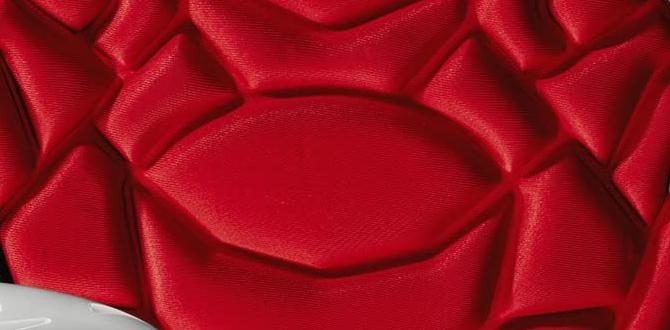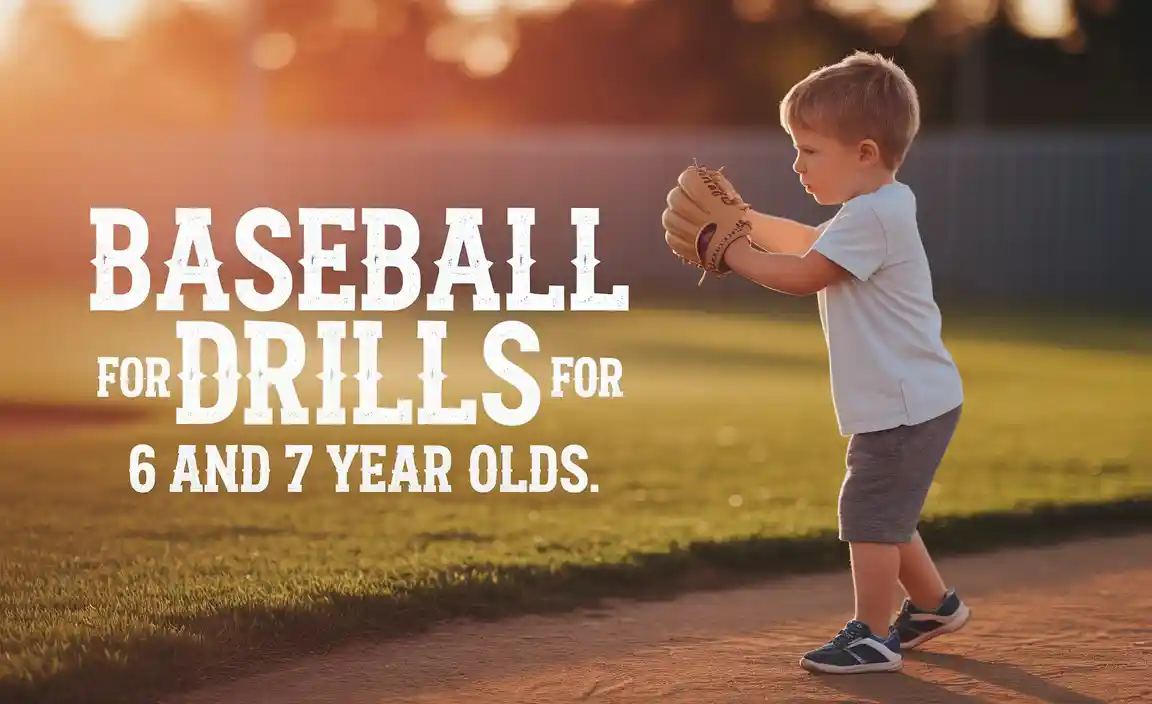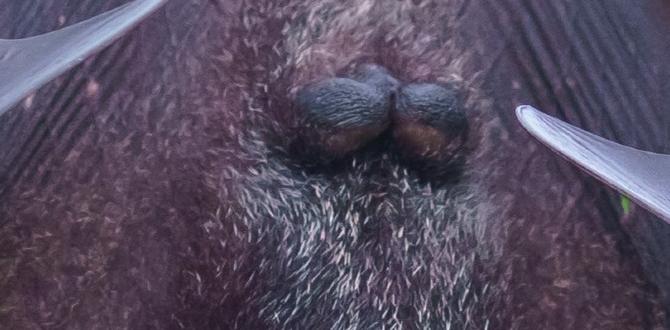Properly fitting Rawlings youth baseball gear is crucial for comfort, safety, and performance. This guide provides clear, step-by-step tips to ensure your young player has the best equipment for their age and size, maximizing their game and enjoyment.
Getting the right-sized equipment for young ballplayers can feel like a puzzle. Too big, and it gets in the way, causing frustration. Too small, and it’s uncomfortable and doesn’t offer the protection needed. For parents and coaches, this is a common challenge. But don’t worry! With a few simple checks and a bit of know-how, you can gear up your young slugger or defender with confidence. We’re going to walk through the essential fitting tips for Rawlings youth baseball gear, ensuring a great fit that helps your player focus on the game. Let’s get started!
Why Proper Fit Matters for Rawlings Youth Gear
When young athletes step onto the diamond, their gear isn’t just about looking the part; it’s a critical component of their safety, comfort, and ability to play their best. For Rawlings youth baseball gear, a perfect fit is especially important because it directly impacts how a player moves, executes skills, and stays protected. Ill-fitting equipment can lead to a host of problems, from reduced performance to unnecessary risks.
Think about it: a glove that’s too loose won’t secure the ball, making errors more likely. A helmet that’s too big might not stay in place during a slide, compromising safety. A bat that’s too heavy or long can hinder a player’s swing speed and control. Conversely, when Rawlings youth gear fits just right, it feels like an extension of the player themselves. It allows for natural movement, provides secure protection, and builds confidence. This guide will help you navigate the specifics of fitting key pieces of Rawlings youth equipment.
Fitting the Rawlings Youth Glove: Your Player’s First Line of Defense
The baseball glove is arguably the most personal piece of equipment for any player. For youth ballplayers, a properly fitted glove is essential for developing good fielding skills and ensuring they can securely catch the ball. Rawlings offers a fantastic range of youth gloves designed for smaller hands and developing players. Here’s how to get that perfect fit.
Glove Size Matters
Glove sizing is typically measured from the heel of the glove to the tip of the index finger. Rawlings youth gloves come in various sizes, usually ranging from 9 inches to 12 inches. The general rule of thumb for youth players:
- T-Ball and Younger (ages 4-7): 9 to 10.5 inches
- Little League (ages 7-10): 10 to 11.5 inches
- Pony League and older youth (ages 10-14): 11 to 12 inches
It’s also important to consider the player’s position. Infielders generally prefer smaller gloves for quicker transfers, while outfielders might opt for slightly larger gloves to help with catching fly balls. Pitchers often use gloves with closed webbing for a better view of the batter.
The Feel Test: Comfort and Control
Beyond the measurement, the feel is paramount. Have your player put the glove on.
- Snug but not tight: The glove should feel snug around the hand, with no excessive looseness. It shouldn’t feel like their hand is swimming inside it.
- Easy closure: While a new glove will be stiff, your player should be able to close their hand around home plate with some effort, signifying a good pocket. If they struggle to close it to the point of frustration, it might be too large or too stiff for their current strength.
- Thumb and finger alignment: Ensure their thumb fits comfortably in the thumb loop and their fingers are within the finger stalls. Some players prefer to put their index finger outside the glove for added control.
- Breaking it in: Remember that Rawlings youth gloves, like all leather gloves, require a break-in period. Gentle flexing, using glove oil or conditioner, and playing catch will help soften the leather and form a proper pocket. Look for resources from Rawlings on breaking in gloves for optimal performance.
Rawlings Youth Bat Fitting: Power and Precision for Every Swing
Choosing the right bat is key to developing a powerful and accurate swing. Rawlings offers a wide array of youth bats made from different materials and with varying lengths and weights. The goal is to find a bat that your player can swing quickly and with control.
Understanding Drop Weight and Length
Two critical measurements for youth bats are:
- Length: This is straightforward. The bat should feel comfortable when held by the player’s side. When the player holds the bat parallel to their leg, the knob of the bat should reach their palm.
- Drop Weight: This is the difference between the bat’s length and its weight (e.g., a 30-inch bat weighing 20 ounces has a drop weight of -10). For youth players, lighter is generally better to ensure they can maintain good bat speed and control. Bats with a drop weight of -9, -10, or -11 are common for younger players.
The Swing Test: How to Know if It’s Right
The best way to fit a bat is with your player swinging it (or at least mimicking a swing).
- Comfortable Hold: Have your player hold the bat out in front of them, parallel to the ground. They should be able to hold it steady for about 20-30 seconds without their arms shaking excessively.
- Full Swing Motion: Ask them to perform a practice swing. The bat should feel balanced and controllable throughout the entire motion—from the load to the follow-through. They shouldn’t feel like the bat is too heavy or awkward.
- Bat Speed: The primary goal is to maximize bat speed. A bat that is too heavy will slow down their swing, while one that is too light might not have enough power.
- Diameter: Ensure the bat meets league regulations for barrel diameter (e.g., 2 1/4 inch or 2 5/8 inch). Check your league’s specific rules, as they can vary. Many youth leagues also have specific certification marks (like USA Baseball or USSSA stamps) required on the bat.
Many younger players benefit from consulting charts that recommend bat lengths and weights based on height and age. For instance, USA Baseball provides recommendations for selecting the right bat size for young players, which can be a great starting point:
Rawlings Youth Catcher’s Gear: Protection is Paramount
Catching is a demanding position, and for young players, proper catcher’s gear is non-negotiable. Rawlings makes excellent youth catcher’s sets designed for maximum protection, comfort, and a good fit. A well-fitted set allows the catcher to move freely and stay focused on the game, knowing they are well-protected.
Components of Catcher’s Gear
A full catcher’s gear set typically includes:
- Catcher’s Mask/Helmet
- Chest Protector
- Leg Guards
Fitting the Catcher’s Mask/Helmet
The catcher’s mask (or helmet system) is vital for protecting the head and face.
- Coverage: The mask should cover the entire face, from the forehead down to the chin, and extend to the ears.
- Fit: When worn, it should fit snugly without being uncomfortable. There should be no significant gaps around the edges. The player should be able to see clearly without the mask obstructing their peripheral vision.
- Chin Strap: Ensure the chin strap is secure across the jawline.
- Adjustability: Many Rawlings youth catcher’s masks have adjustable harness systems. Have the player try it on and adjust it until it feels stable and secure, even when they tilt their head.
Fitting the Chest Protector
The chest protector guards the torso against errant pitches and foul balls.
- Length: When worn, the bottom of the chest protector should extend down to just above the belt buckle. It should not restrict movement in the hip or groin area.
- Shoulder Fit: The shoulder padding should sit comfortably on the player’s shoulders without being too tight or too loose.
- Straps: Adjustable straps allow for a custom fit. Ensure these are snug but don’t dig into the skin.
Fitting the Leg Guards
Leg guards protect the shins, knees, and feet.
- Length: The top of the leg guards should align with the bottom of the chest protector, and the bottom should rest on top of the shoe. They should protect the entire shin area.
- Knee Cap: The knee cap on the guard should align directly with the player’s kneecap.
- Secure Straps: Similar to the chest protector, leg guards typically have multiple straps. Ensure these are tightened securely but comfortably, so the guards don’t shift during movement.
- Mobility: The player should be able to squat, move laterally, and run to the pitcher’s mound (if needed) without the leg guards feeling restrictive or awkward.
It’s essential that catcher’s gear is not too loose, as this can lead to shifting during play, compromising protection. However, it should also not be so tight that it impedes movement or breathing. Rawlings’ commitment to safety engineering means their gear is designed with these fit considerations in mind.
Other Essential Rawlings Youth Gear and Fitting Tips
Beyond gloves, bats, and catcher’s gear, Rawlings offers other important equipment like batting helmets, sliding shorts, and batting gloves, all of which require proper fitting.
Rawlings Youth Batting Helmets
A batting helmet is crucial for protecting a player’s head from impact. Rawlings offers helmets with and without cages, and some with integrated ear guards.
- Fit: The helmet should sit level on the head, not tilted back or forward. It should feel snug all around the head, with no significant pressure points. When the player shakes their head, the helmet should not move freely.
- Adjustability: Most Rawlings youth helmets feature an adjustable dial system at the back. Ensure this is properly tightened for a secure fit.
- Straps: If the helmet has a chin strap, it should be fastened securely.
- Vision: The brim of the helmet should not obstruct the player’s vision.
Many Rawlings batting helmets meet the ASTM F1045 safety standard, but ensuring a good fit is the player’s responsibility.
Rawlings Youth Sliding Shorts and Base Layers
Sliding shorts and other padded base layers can help protect young players from abrasions during slides and provide a bit of compression for comfort and muscle support.
- Fit: These should fit like compression shorts or athletic underwear – snug and supportive, but not constricting. They shouldn’t ride up or bunch uncomfortably.
- Coverage: Ensure the padding (if applicable) is positioned correctly to cover the hips and thighs.
Rawlings Youth Batting Gloves
Batting gloves improve grip and can help prevent blisters.
- Fit: They should fit like a second skin. There should be no extra material in the fingers or palm. Ensure the velcro strap at the wrist fastens securely without being too tight.
- Comfort: Have the player grip a bat to ensure there are no wrinkles or seams that could cause discomfort during their swing.
Common Fitting Mistakes to Avoid
Getting the fit wrong can be more detrimental than having slightly older or worn-out gear. Here are some common fitting mistakes and how to sidestep them:
- Buying gear “to grow into”: This is a frequent pitfall for parents wanting to save money. However, gear that is too big compromises safety and hinders performance. It’s better to buy correctly sized gear and replace it when outgrown.
- Ignoring the player’s feedback: What feels comfortable and secure to you might not feel that way to the young athlete. Always listen to their feedback about comfort, freedom of movement, and any pinching or rubbing.
- Not breaking in the glove properly: A stiff, unworn glove can be a major impediment to catching. Develop a consistent break-in routine.
- Overlooking league rules: Different leagues have different rules regarding equipment size, weight, and certification. Always check your league’s rulebook before purchasing bats or other regulated gear.
- Forgetting about adjustability: Many pieces of Rawlings youth gear are designed with adjustable straps or systems. Ensure these are utilized to get the best possible fit.
Table: Rawlings Youth Gear Sizing Quick Reference
Here’s a general guide to help you start determining sizes. Remember that individual player proportions can vary, so always measure and test when possible.
| Equipment Type | Age/Size Range (Approximate) | Key Fitting Points |
|---|---|---|
| Youth Glove | 4-7 yrs: 9″-10.5″ 7-10 yrs: 10″-11.5″ 10-14 yrs: 11″-12″ |
Snug fit, easy closure, proper pocket formation. |
| Youth Bat | Varies greatly by height/weight | Player can hold steady, comfortable swing motion, right drop weight (-9 to -11 common). |
| Catcher’s Mask | Youth sizes | Full facial coverage, secure fit, no vision obstruction. |
| Chest Protector | Youth sizes | Extends to belt, comfortable shoulder fit, easy movement. |
| Leg Guards | Youth sizes | Protects entire shin/knee, knee cap alignment, secure straps. |
| Batting Helmet | Youth sizes | Level on head, snug all around, no movement with head shake. |
Frequently Asked Questions (FAQ) About Rawlings Youth Gear Fitting
Q1: How do I measure a youth baseball glove for my child?
To measure a youth baseball glove, use a tape measure to go from the heel of the glove (the bottom middle part of the palm) along the pocket to the tip of the index finger. This measurement, in inches, is the glove’s size. For example, a glove might measure 10.5 inches. Always check how it feels on your child’s hand, as measurements are just a starting point.
Q2: My son is growing fast. Is it okay to buy a bat that’s a little too big so he can use it longer?
It’s generally not recommended to buy a bat that’s too big or too heavy. A bat that’s too heavy can slow down your child’s swing, reduce their control, and potentially lead to bad habits. It can also make it harder for them to hit the ball squarely. It’s better to purchase a bat that fits them well now and look at upgrading when they outgrow it.
Q3: How should catcher’s leg guards fit my child?
For catcher’s leg guards, the top should align with the bottom of their chest protector, and the bottom should sit over their shoe. The knee cap on the guard should align directly over your child’s kneecap. Ensure the straps are snug enough so the guards don’t slide down during play, but not so tight that they restrict movement or cut off circulation.
Q4: My child’s Rawlings glove seems too stiff. What can I do?
Most new leather gloves, especially youth ones designed for durability, will be stiff. The best way to soften them is to play catch regularly. You can also use a small amount of glove oil or conditioner on the leather, working it into the pocket and hinges. Gently bending and shaping the glove with your hands also helps. Avoid soaking the glove in water, as this can damage the leather.
Q5: What’s the best way to check if a batting helmet fits correctly?
A properly fitting batting helmet should sit level on your child’s head, not tilted too far back or forward. It should feel snug all around without uncomfortable pressure points. When your child shakes their head gently, the helmet should not move independently. If the helmet has an adjustable dial, make sure it’s tightened appropriately. The brim should also be positioned so it doesn’t block their vision.





